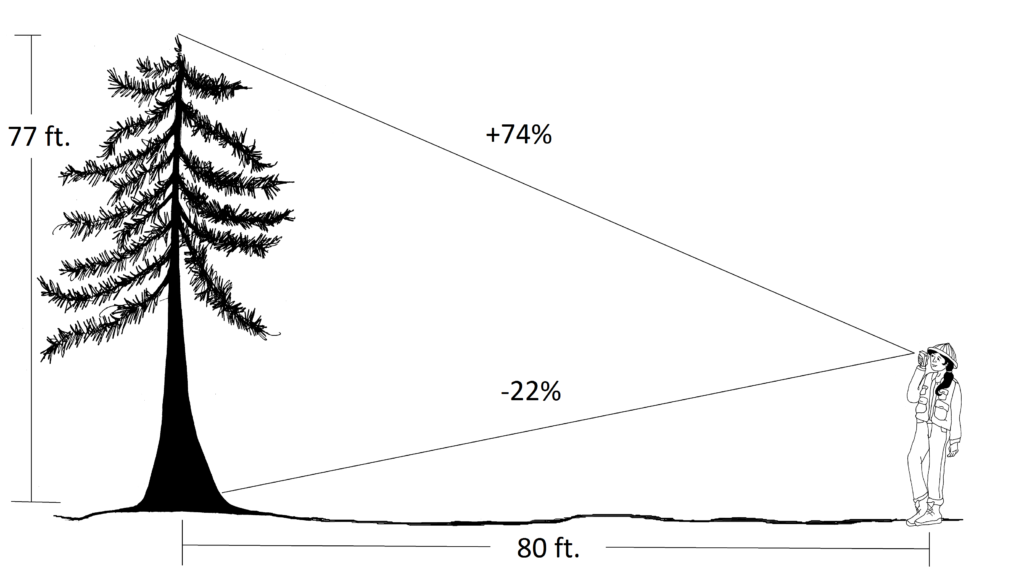2.7: Field Technique Tips for Measuring Tree Height
- Page ID
- 20253
Estimating total tree height is very easy to do correctly, but does require that we think about how we are taking our measurements. Here are some tips.
1. Always walk to where one can clearly see the tree top. This can be tough to do, especially in dense stands, on extremely foggy days, or in stands with heavy brush. Dragging a tape around in brush trying to get to that special spot where the tree tip comes into view can be frustrating, but it needs to be done. It is actually pretty rare to have a tree whose crown is impossible to see somewhere within 150 feet. This is why it is important to remain flexible in selecting horizontal distances. Commonly, errors in measuring tree heights come from measuring a branch instead of the tip, measuring the wrong tree top, or guessing where the tree top is in a dense canopy.
2. Do not always rely on that magical distance of 100 feet (Figure 2.15). Once you get comfortable with the instruments in the field, find a method that allows you to be flexible in choosing your horizontal distance from the tree. Discover a fast way to adjust your heights with varying horizontal distances. Some people have to follow a formula. I don’t want to mess with the formula, so I just think of 100 (for %slope) and 66 (for topographic slope) as “calibration” figures. For example:
- At 33 feet, I am 1/2 of one chain (66 feet) from the tree, so tree height is half of my topog slope readings.
- Likewise, at 50 feet, I am 50% of the way to 100; so the tree height is 50% of my slope readings. At 90 feet, the tree height is 90% of my slope readings, etc.
- Let’s say I get +74% to the top, and –22% to the stump. 74+22 = 98. If I am 60 feet from the tree (60% of 100), then tree height is 60% of 90 = 54 feet. If I am 80 feet from the tree (80% of 100), then tree height is 80% of 90 = 72 feet. If I am 120 feet from the tree (120% of 100), then tree height is 120% of 90 = 108 feet.

Figure 2.15. A tree is measured from a horizontal distance of 80 feet. Note that the tree height is less than the sum of the two slope readings (98). If one is closer to the tree than 100 feet, the slope readings will be more acute (steeper) than at 100 feet. Therefore, the tree must be shorter than the sum of the readings. Another way to think of it is that 80 feet is 80% of 100 feet, so the tree has to be 80% of the sum of the slope readings. Likewise, if one were 150 feet from the tree, the total tree height would be 150% or 1.5 times the sum of the slope readings.


